
Keys Cambridge English for Engineering Teachers Notes
.pdf
UNIT 4 Engineering design Teacher’s Notes
d Students complete the task either in class or as a homework activity.
Suggested answers
As discussed today, I confirm that the connection between the plate and
T section on the ski lift should have six bolts, not eight as shown on the detail. The two bolts shown on the detail which would clash with the flange of the T section are not required.
51 |
Cambridge English for Engineering |
Cambridge University Press 2008 |
Photocopiable |
|
www.cambridge.org/elt/englishforengineering |
||||
|
|
|||

UNIT 4 Engineering design Teacher’s Notes
Background information
Working with drawings (pages 30 and 31)
Drawings is a collective term for technical drawings, comprising a wide range of different views of components and assemblies, for example cross-sections or exploded views, at different scales showing different levels of detail. In everyday
English, technical drawings are often referred to generally as plans; in the language of engineering, however, plan refers to just one type of view (a view from above). In the past, engineering drawings were often called blueprints, in reference to the blue and white colours used in printing processes at the time. Although the term is still used figuratively in everyday English, it is generally not used in engineering. Most engineering designs are now produced by computer, using CAD (computer-aided design) software. But the term drawing is still used to refer to on-screen designs.
Drawings http://en.wikipedia.org/wiki/Plan_view http://en.wikipedia.org/wiki/Elevation_(view)
http://en.wikipedia.org/wiki/Cross_section_(geometry) http://en.wikipedia.org/wiki/Exploded_view http://en.wikipedia.org/wiki/Schematic
Discussing dimensions and precision (pages 32 and 33)
In this section, tolerance (permissible deviation from a specified ideal measurement or value) is dealt with in the context of linear dimensions. However, the concept of tolerance can be applied to most types of measurements and values in engineering. In electrical applications, the frequency of an alternating current may be allowed to vary within a specified tolerance, for example ±0.2 Hertz, or in manufacturing, the temperature of a production process involving heating may be allowed to vary within a specified temperature range, for example ±2.5°C.
Describing design phases and procedures (pages 34 and 35)
This section focuses on the process of developing designs, and circulating the relevant drawings and information among members of design and production teams. In engineering, this process often requires a lot of communication – especially written correspondence. The latter is particularly prevalent on projects involving several companies, as it represents a chronological record of the flow of design
information, which can be central to contractual issues (causes of delays, attribution of responsibility for design quality, etc.)
Resolving design problems (pages 36 and 37)
This section deals with the communication that takes place as designs are revised to address technical problems arising during production/construction. On many engineering projects, levels of complexity and time pressure mean that it is virtually impossible to get designs right first time. A particular problem arises when there are large numbers of drawings – for different structural, mechanical and electrical components in a building or a vehicle. This invariably results in clashes and contradicting information between different drawings. Consequently, there is an ongoing process of design revisions as a project progresses, with the production
team bringing technical problems to the attention of the design team, and the design team amending the design to resolve the problems. This communication process can take place verbally, but is often backed up with formal correspondence, for record purposes.
|
Cambridge English for Engineering |
Cambridge University Press 2008 |
|
|
52 |
Photocopiable |
|||
www.cambridge.org/elt/englishforengineering |
||||
|
|
|||
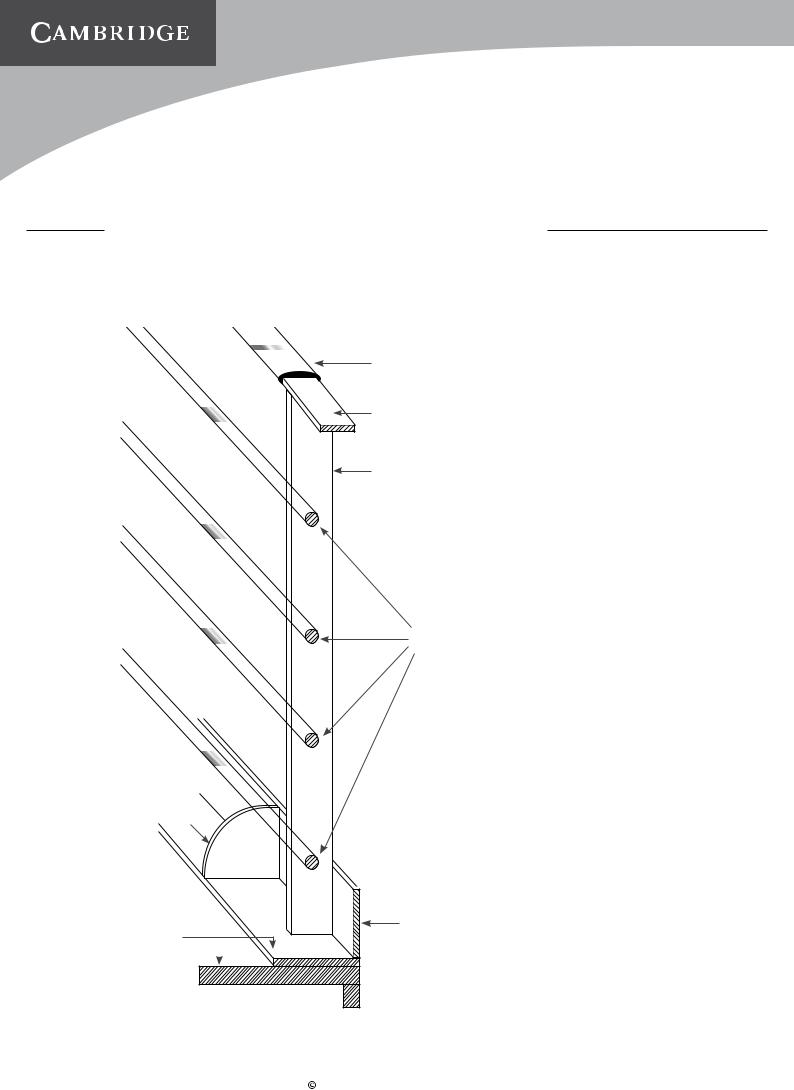
Professional English
Cambridge English for
Engineering
TEACHER’S NOTES
UNIT 4 Engineering design
 Resource sheet 4a
Resource sheet 4a
You can use this drawing to help you with Exercise 5 on page 31.
Handrail cover |
Handrail bar |
Post |
Guard rails |
Stiffener plate |
Toe plate |
Floor plate |
Deck |
|
Cambridge English for Engineering |
Cambridge University Press 2008 |
|
|
53 |
Photocopiable |
|||
www.cambridge.org/elt/englishforengineering |
||||
|
|
|||

Professional English
Cambridge English for
Engineering
TEACHER’S NOTES
UNIT 4 Engineering design
 Resource sheet 4b
Resource sheet 4b
Label the drawing using the words in the box.
arc centre circumference cord diameter radius segment (x2) tangent |
|
|
|
6 |
|
1 |
centre |
|
|
7 |
circle |
2 |
8 |
|
3 |
|
|
4 |
|
|
|
5 |
|
|
9 Total distance around perimeter of circle = |
|
|
Cambridge English for Engineering |
Cambridge University Press 2008 |
|
|
54 |
Photocopiable |
|||
www.cambridge.org/elt/englishforengineering |
||||
|
|
|||

Professional English
Cambridge English for
Engineering
TEACHER’S NOTES
UNIT 4 Engineering design
 Resource sheet 4c
Resource sheet 4c
Change the words and phrases in bold using the words and phrases in the boxes, in order to make the queries and instructions sound more professional.
clarify confirm conflicting discrepancy disregard following
CONTRACTOR’S QUERY No. 867
Following
(1) After our telephone conversation today, we note that there is a (2) difference between dwgs 76E and 78E, which indicate (3) different dimensions for the width of the roof opening. Please (4) make it clear which dimension is correct.
ENGINEER’S INSTRUCTION
We (5) can tell you the correct dimension is on dwg 76E. Please (6) forget about the dims on dwg 78E.
advise on as per clash proposed work to
CONTRACTOR’S QUERY No. 868
As discussed this morning on site, we confirm there is a (7) collision between the
(8) planned cable tray (dwg E56) and air-conditioning ductwork (now installed (9) like dwg M118) in the ceiling void at Grid D14. Please (10) tell us an alternative cable route.
ENGINEER’S INSTRUCTION
Please (11) do it like attached sketch S33. Revision of dwg E56 to follow.
contradicts propose provide states
CONTRACTOR’S QUERY No. 869
A note on dwg 11A specifies black bolts at the base of the ski lift cable support. This (12) is different to the specification, which (13) says that all joints to comprise High Strength Friction Grip Bolts. We (14) are thinking about using HSFG fixings at this location.
ENGINEER’S INSTRUCTION
Please (15) give us further details of the HSFG bolts you are proposing.
approved further to intention specified
CONTRACTOR’S QUERY No. 870
(16)After what was said in query 869, the proposed HSFG bolts are as per those
(17)mentioned in the design for all other bolted joints on the ski lift supports. Our
(18)hope is to use a single bolt spec to facilitate assembly.
ENGINEER’S INSTRUCTION (19) We agree that’s OK.
|
Cambridge English for Engineering |
Cambridge University Press 2008 |
|
|
55 |
Photocopiable |
|||
www.cambridge.org/elt/englishforengineering |
||||
|
|
|||
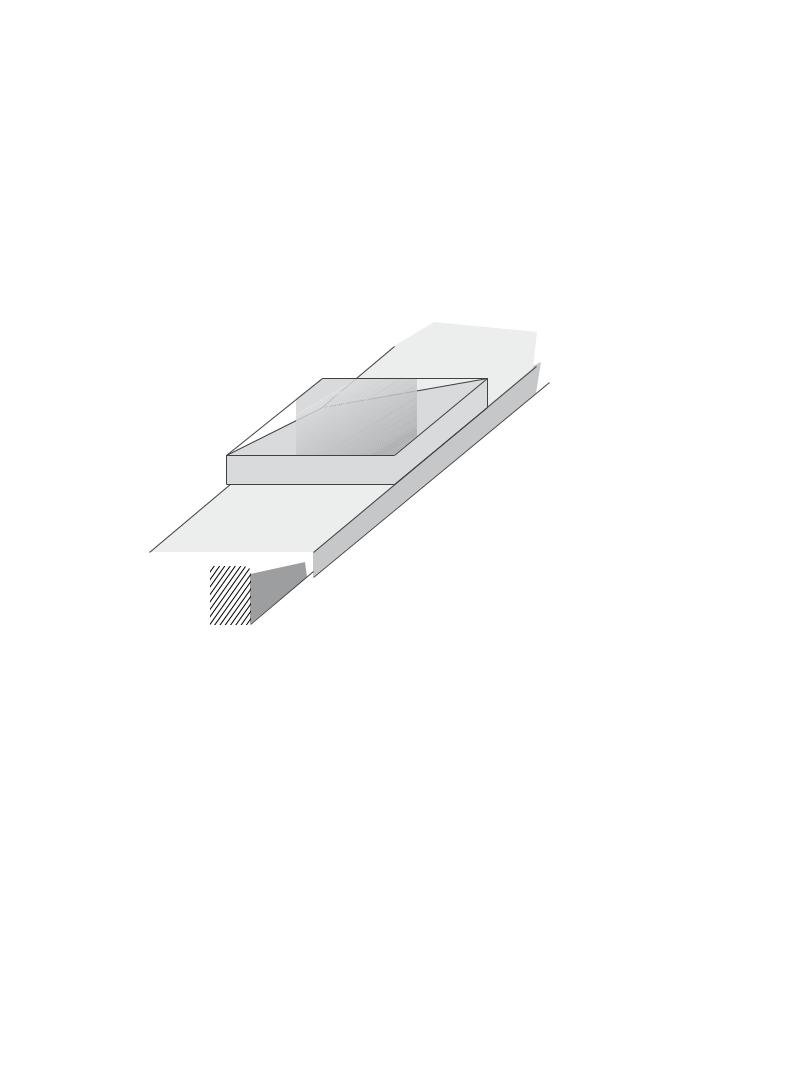
Professional English
Cambridge English for
Engineering
TEACHER’S NOTES
UNIT 4 Engineering design
 Resource sheet 4d
Resource sheet 4d
You can use this drawing to help you with Exercise 14c on page 37.
Plate
Bolt holes
T profile
|
|
|
|
|
|
|
|
|
|
|
|
|
|
|
|
|
Cambridge English for Engineering |
Cambridge University Press 2008 |
|
||||
56 |
Photocopiable |
||||||
www.cambridge.org/elt/englishforengineering |
|||||||
|
|
||||||
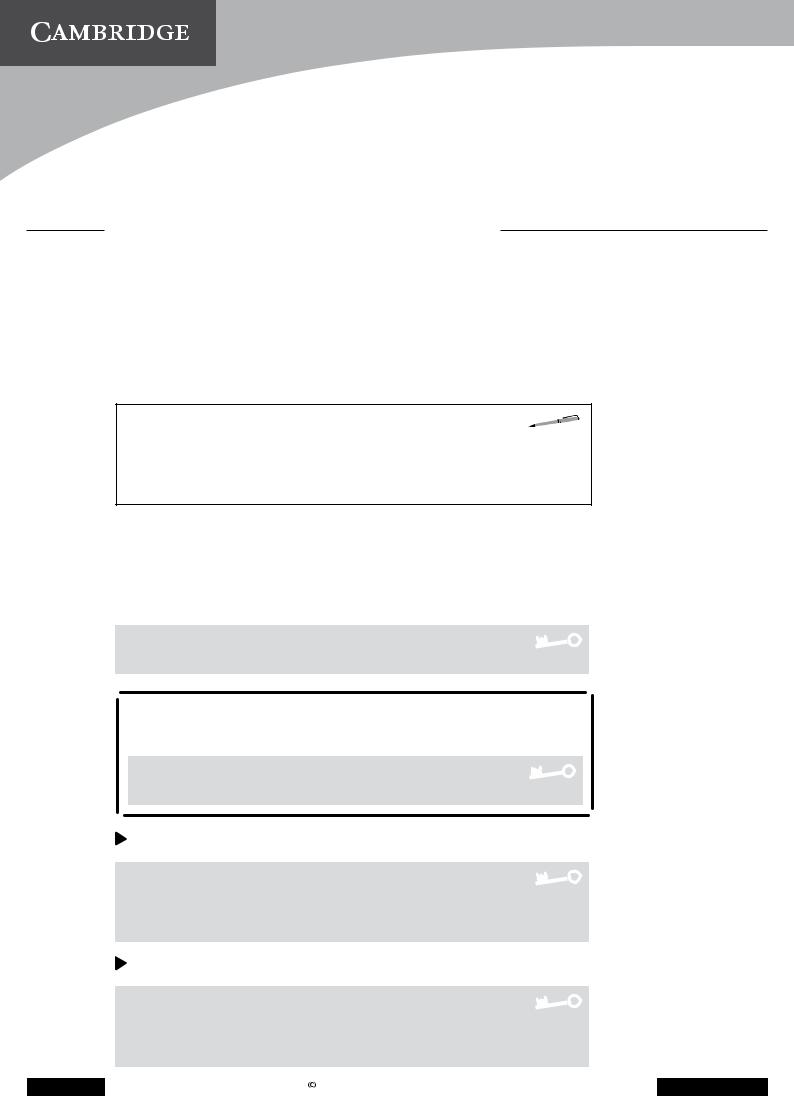
Professional English
Cambridge English for
Engineering
TEACHER’S NOTES
UNIT 5 Breaking point
•Describing types of technical problem
•Assessing and interpreting faults
•Describing the causes of faults
•Discussing repairs and maintenance
 Go to page 67 for essential background information and useful web links.
Go to page 67 for essential background information and useful web links.
 Describing types of technical problem
Describing types of technical problem
Language note
You will find the following vocabulary useful in this section. abrasion, heat, pressure, (physical) shock, vibration
bend, block, blow up, clog (up), crack, cut out, jam, leak, run out (of), snap, wear (out), work loose
Before you begin …
Ask students to give a brief description of a technical problem they recently experienced, either at work or at home. In larger groups, this could be done in pairs.
1 Students complete the task in pairs.
Answers
See audioscript 5.1 on page 89
Extension activity: Le Mans(Resource sheet 5a)
2a
b
Give students Resource sheet 5a. Students read the text and mark the statements (T) or (F).
Answers
1 F 2 F 3 T 4 F 5 T 6 T
5.1 Students listen and answer the questions.
Answers
1To finish first, first you must finish
2Engineering enemies
3Wear and tear
5.1Students complete the list and listen again to check their answers.
Answers |
|
|
|
1 |
heat |
4 |
shocks |
2 |
pressure |
5 |
abrasion |
3 |
vibration |
|
|
57 |
Cambridge English for Engineering |
Cambridge University Press 2008 |
Photocopiable |
|
www.cambridge.org/elt/englishforengineering |
||||
|
|
|||
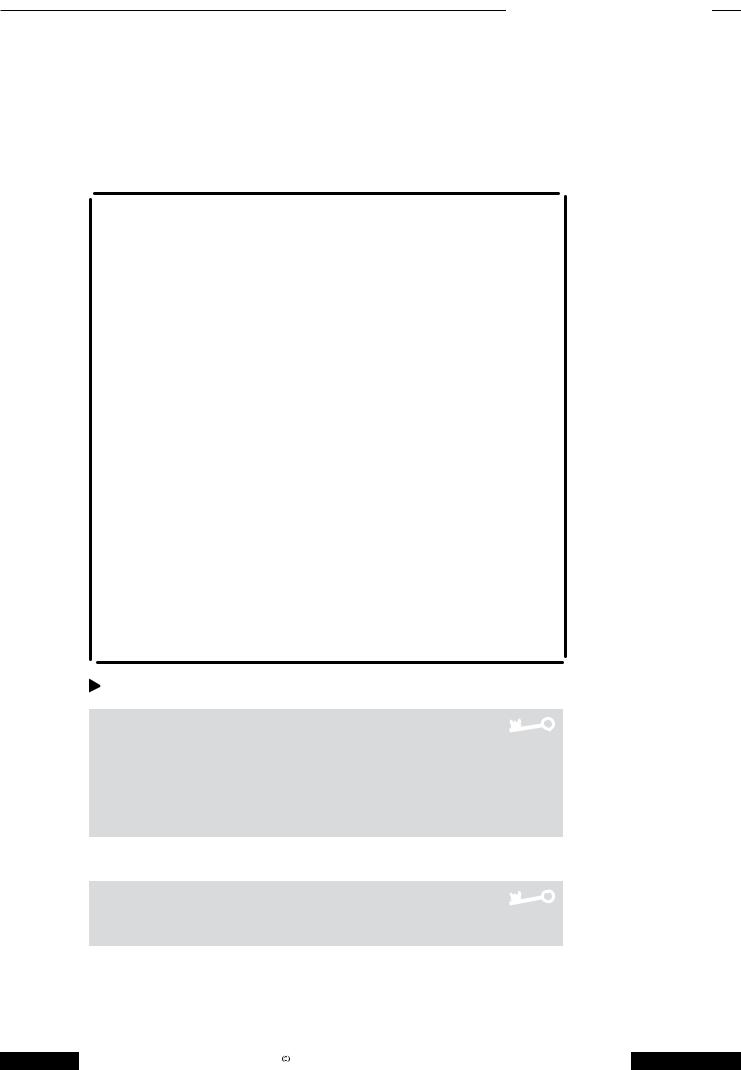
UNIT 5 Breaking point Teacher’s Notes
c Students complete the task in pairs.
Suggested answers |
|
|
|
1 |
shocks |
6 |
abrasion |
2 |
heat |
7 |
shocks |
3 |
abrasion |
8 |
pressure (caused by heat) |
4 |
shocks |
9 |
vibration |
5 |
abrasion |
|
|
|
|
|
|
Extension activity: automotive parts
If the focus on automotive parts is relevant or interesting to students, you could ask them to work in pairs and discuss how the parts listed in Exercise 2c would be different in a racing car compared with a road car.
Answers
1chassis = much stiffer so that it doesn’t twist due to high loads during cornering
2engine = much more powerful, able to rev much higher
3gearbox = has an electronically controlled semi-automatic gearbox controlled by paddles on the steering wheel, able to make much faster gear shifts and possibly seamless shifts where there is no interruption in power delivery during gear shifting
clutch = much stronger as required to cope with sudden power delivery
4suspension = much stiffer to better cope with cornering forces and vertical load generated by downforce from wings
5brakes = need to cope with much greater loads and operate at much higher temperatures
6tyres = in dry conditions slick (smooth) tyres are used instead of grooved tyres, to maximise the contact patch – the amount of rubber in contact with the road surface
7wings = specific to racing cars
8cooling system = most racing cars do not have a fan to blow air over their radiators when the car is stationary, meaning they must be moving to benefit from the effects of air cooling; hence they may only remain standing for a very short time, to avoid overheating
9nuts and bolts = stronger and lighter, with better resistance to working loose due to vibration
3 a |
5.2 Students listen and answer the questions. |
Answers
1T
2F – the driver switched the engine off
3T
4T
5F – the wheel nut wouldn’t turn
6F – the driver didn’t bend the suspension
b Students complete the extracts.
Answers |
|
|
|
1 |
blocking |
3 |
bend; snap |
2 |
jam |
4 |
crack |
58 |
Cambridge English for Engineering |
Cambridge University Press 2008 |
Photocopiable |
|
www.cambridge.org/elt/englishforengineering |
||||
|
|
|||
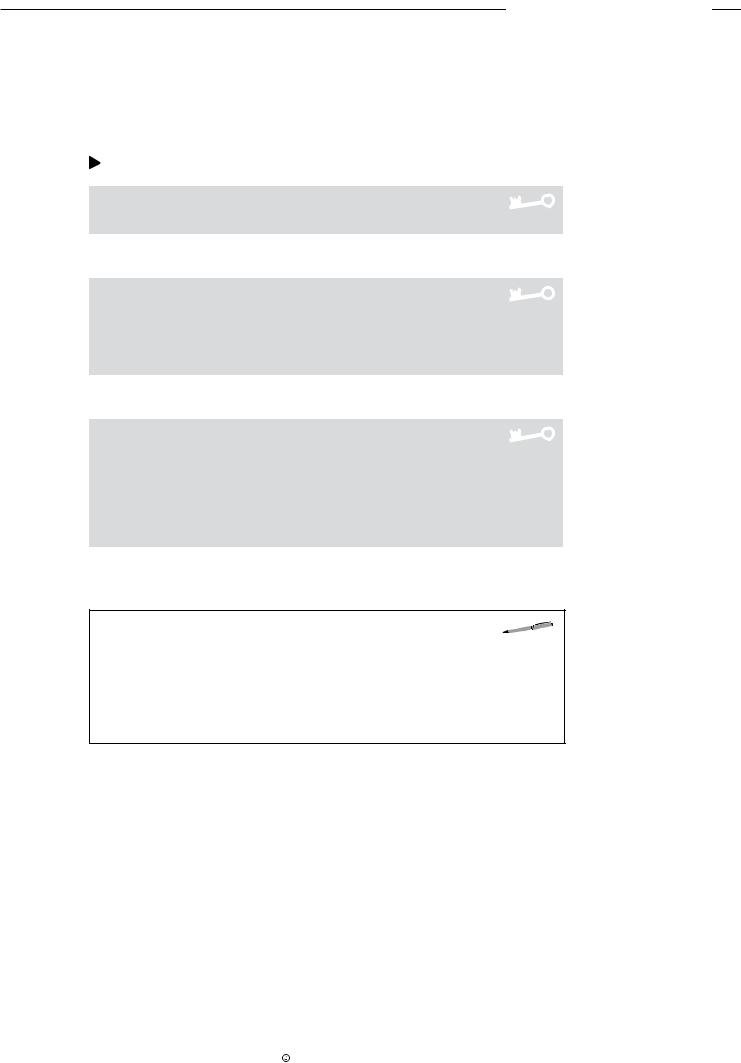
UNIT 5 Breaking point Teacher’s Notes
c Students complete the extracts.
Answers |
|
|
|
1 |
leaking out |
4 |
clog up |
2 |
run out |
5 |
wearing out |
3 |
cut out |
6 |
blow up |
|
|
|
|
d 5.2 Students listen again and check their answers to Exercises 3b and 3c.
Answers
See audioscript 5.2 on pages 89 and 90
e Students complete the sentences.
Answers |
|
|
|
2 |
leaking out |
6 |
blocked (up) |
3 |
jammed |
7 |
bent |
4 |
clogged up |
8 |
worn out |
5 |
worked loose |
9 |
run out |
4 Students complete the task in pairs.
Answers
Monza has long straights and several chicanes. This means cars are at full-throttle for longer, and need to do a lot of heavy braking. Problems: engines can overheat and blow up; brakes can overheat; riding the kerbs can cause the suspension to crack, bend or snap; the right-hand corners cause the tyres on the left of the car to wear out faster than those on the right side; and leaves can block up the radiators.
 Assessing and interpreting faults
Assessing and interpreting faults
Language note
You will find the following vocabulary useful in this section.
defect, defective, fault, faulty, intermittent(ly), major, minor, properly, sudden, systematic(ally), wear and tear
certainly (not), perhaps, possibly, probably (not)
I doubt it’s …, It can’t be …, It could be …, It might be …, It must be …, It sounds like it’s …
Before you begin …
Ask students to explain what is meant by assessing (using synonyms such as evaluating, examining, making judgements) and interpreting (understanding, reaching conclusions).
|
Cambridge English for Engineering |
Cambridge University Press 2008 |
|
|
59 |
Photocopiable |
|||
www.cambridge.org/elt/englishforengineering |
||||
|
|
|||

UNIT 5 Breaking point Teacher’s Notes
5 a Students complete the task in pairs.
Before you begin …
Ask students to explain what is meant by troubleshooting (= solving problems). Ask students to suggest the most effective ways of solving technical problems, generally speaking. For example, when you’re trying to solve a technical fault whose cause you don’t understand at first, what should you do in order to make progress? Elicit points such as identifying possible causes, eliminating possibilities, using a process of elimination.
b Students complete the task in pairs.
Answers
User’s observations = what the person using the machine has noticed Nature of fault = type of problem
Circumstances of fault = in what type of situation the fault happened/happens External factors = things from outside, for example the weather or something hitting the machine
Process of elimination = thinking of possible problems and deciding which are not possible in order to reduce the number of possibilities
Identify the fault = find the fault / decide what the fault is
Determine action and urgency = decide what to do about the problem and decide how quickly it needs to be done
6 a |
5.3 Students listen and answer the questions. |
Answers
1Check injection
2Water in the fuel system
3Because the fuel was put in directly from a delivery tanker
4When the engine is started from cold
5A faulty fuel pre-heater plug
6The plug can be changed at the next service. It’s not an urgent problem.
b Students match the words and synonyms.
Answers |
|
|
|
1 |
defect |
5 |
properly |
2 |
defective; faulty |
6 |
intermittently |
3 |
major |
7 |
systematically |
4 |
minor |
|
|
60 |
Cambridge English for Engineering |
Cambridge University Press 2008 |
Photocopiable |
|
www.cambridge.org/elt/englishforengineering |
||||
|
|
|||
